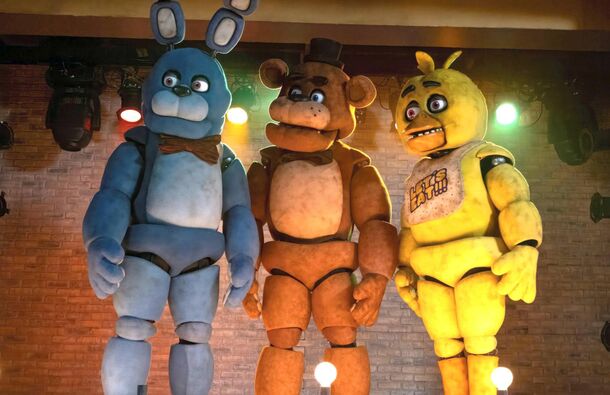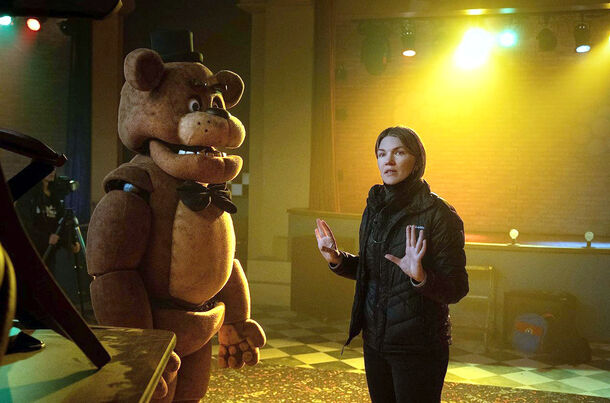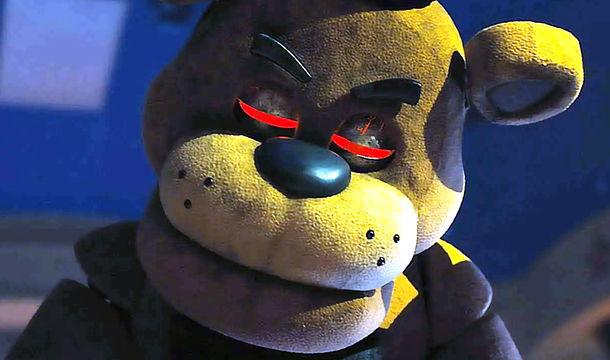Is Five Nights at Freddy’s Really Based on Tragic Real Events? Wild Theory Explained

This fan theory makes an already creepy game even creepier.
Summary:
- Five Nights at Freddy's was inspired by the real-life Chuck E. Cheese's pizzeria, which used animatronics.
- Many fans believe that the plot of FNaF was inspired by a real-life tragedy when Nathan Dunlap shot a group of people at Chuck E. Cheese.
- Although there are some similarities between the game's plot and the real-life incident, the game's creator never confirmed the theory.
On October 26th, the horror movie Five Nights at Freddy's was officially released online and one day later in the movie theaters. It is an adaptation of the popular video game series about a pizzeria where creepy animatronics walk around at night. And before the movie came out, there were already two dozen novels based on it.
Ambiguity in the plot, straightforward, memorable imagery, minimalist gameplay that achieves the desired effect – thanks to all of this, Five Nights at Freddy's attracted attention. A lot of attention.
And since the game lets the imagination run wild, fans began to forge numerous theories about its plot, filling the Internet with drawings and videos of animatronics. And one of the theories is beyond creepy and at the same time quite plausible.
FNaF can be compared to the work of Stephen King – like the works of the King of Horror, much of FNaF's charm comes from its many references to American culture and history.
Five Nights at Freddy’s Origins

In the 1980s, when cassette recorders were ubiquitous and 3D computer graphics were still somewhat unusual, animatronics were popular in the US. They were used in film and animation, in the toy industry, and in amusement parks. As a result, they found their way into other areas of entertainment.
One such place was the Chuck E. Cheese's restaurant chain, whose very first pizzeria used singing and instrument-playing animatronics to attract customers. It was this musical group that became one of the main sources of inspiration for the game's creator, Scott Cawthon.
In the second installment of the game series, a mysterious incident has equipped the animatronics with a database of killers so that the robots can track down a potential threat and help prevent the crime. And if you think animatronics scanning customers for criminal records is silly, we suggest you take a look at Chuck E. Cheese's.
In the case of this pizzeria, the website pays special attention to the Kid Check program – a system that requires all customers to have a stamp on their hand to ensure that no family members are lost as they leave the restaurant.
Fan Theory Links FNaF to a Real-Life Murder Case

But that's not all that connects Chuck E. Cheese to FNaF. A popular theory among fans is that the story of FNaF is based on the real-life tragic events that occurred on December 14, 1993.
Nathan Dunlap, a former employee who had been fired five months earlier, shot and killed four workers and critically wounded another one. Tragic events often inspire the creators of movies and games, but in this case, things are not so simple.

There are indeed parallels between real events and the plot of the game. According to the popular YouTuber MatPat, who most likely started this theory, the events of the game take place between 1991 and 1996, while the real crime happened in 1993. Furthermore, the number of victims and animatronics is the same – five. And FNaF was obviously inspired by the Chuck E. Cheese pizzeria where the tragedy occurred.
However, it's worth noting that Scott Cawthon himself never confirmed this theory, so there's absolutely no reason to believe that this is what inspired Scott to create the game.
Source: The Game Theorists